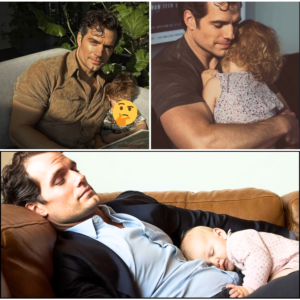Showrunner Alison Schapker discusses the series’ visual depiction of the Agony, the Voice, and more.
Warning: This article contains spoilers for Dune: Prophecy season 1, episode 2, “Two Wolves.”
After two big-screen Dune blockbusters in the last three years, it’s safe to say that movie viewers now know the basics of the Bene Gesserit. It’s clear that this mysterious sisterhood can manipulate people using “the Voice,” make plans measured in centuries, and use a poison needle called the gom jabbar to test promising candidates for political power. But even though Dune director Denis Villeneuve previously told Entertainment Weekly that he wanted to focus on the Bene Gesserit in his adaptations more than any other element of author Frank Herbert’s sci-fi universe, he still only had a couple hours of screen time to do so.
But Max prequel series Dune: Prophecy has six episodes to reveal exactly what members of the Bene Gesserit can do. That was apparent in this Sunday’s episode, when young trainee Lila (Chloe Lea) was put through a trial known as the “Agony,” which requires her to ingest a toxic substance and counteract the poison, thus allowing her to access the Other Memory of Reverend Mothers who have gone before.
This happened to Lady Jessica (Rebecca Ferguson) in Dune: Part Two, but the film mostly focused on the effect the ritual had on Jessica’s pregnancy (it’s usually not allowed for Bene Gesserit members to be pregnant while going through the process). For a young novice like Lila, the ritual can have life-or-death stakes — as we saw in the new episode.
“Some of the most fun we had with this series was trying to see behind the veil, so to speak, of how these powers are gained,” showrunner Alison Schapker tells EW. “They appear to us as superpowers, but as evolution has happened and these women have pushed evolution forward, it’s grounded in this more scientific idea while still being mysterious. These powers that they wield — whether it’s their truth sense or the Voice or their incredible ability to control their cells and transmute chemicals within their body — are described in the book, but it takes an artistic discussion to figure out well, what’s that going to look like?”
:max_bytes(150000):strip_icc():format(webp)/dune-prophecy-chloe-lea-olivia-williams-112524-c23f419404d649a79ba0fff57b2f5686.jpg)
Reverend Mother Tula Harkonnen (Olivia Williams) and trainee Lila (Chloe Lea) in ‘Dune: Prophecy’.Attila Szvacsek/HBO
But it was exactly that collaboration between different members of the filmmaking team, the same kind that created the first episode’s big sci-fi twist, that Schapker found so rewarding about making Dune: Prophecy.
“Those really are some of the best collaborative meetings you could have,” Schapker says. “When it comes to the Agony that takes place in episode 2, I’m astounded by the creativity of our visual effects team in putting that together. At every level you’re trying to keep it grounded and you’re trying to keep it artistic and you’re trying to keep it restrained, believable, and elegant. It’s all a tightrope, but I hope we pulled it off.”
Visualizing Lila’s experience of the Other Memory by having her come face-to-face with other Reverend Mothers — including her own ancestor Dorotea (Camilla Beeput), who we saw killed by a younger Valya Harkonnen (Jessica Barden) in a flashback from the first episode — also brings the Voice to life in a whole new way.
:max_bytes(150000):strip_icc():format(webp)/dune-prophecy-chloe-lea-112524-d4e0bd087a50487697dfe86feff6d167.jpg)
Lila (Chloe Lea) experiences the Agony in ‘Dune: Prophecy’.Attila Szvacsek/HBO
“I love getting to tell the story of the Voice, and I love that it comes out of character and out of a trauma,” Schapker says. “Those are the moments that are just so exciting.”
New episodes of Dune: Prophecy air Sundays on HBO and Max.


